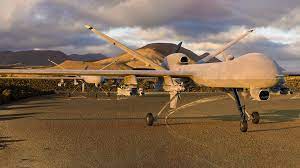In the age of digital surveillance and counter-terrorism efforts, the utilization of social network analysis (SNA) has emerged as a powerful tool for identifying and targeting suspected terrorists. Yet, as advancements in technology blur the lines between surveillance and intervention, a pressing question looms large: How do preventive drone attacks based on digital traces navigate the complex landscape of international law and ethical considerations?
The intersection of law, ethics, and technology has never been more fraught with complexity, particularly in the context of armed conflict and counter-terrorism operations. The recent study conducted by a team of legal scholars and sociologists from the University of Geneva sheds light on the multifaceted challenges posed by the use of SNA in anti-terrorist operations, highlighting the legal ambiguities and ethical dilemmas inherent in targeting individuals based on digital footprints alone.
At the heart of the debate lies the tension between security imperatives and respect for human rights and international law. While the imperative to combat terrorism and protect civilian populations is undeniable, the methods employed in pursuit of these objectives must adhere to legal principles and ethical norms that uphold fundamental rights and safeguards.
The study underscores the inherent limitations and risks associated with relying solely on SNA as a basis for drone attacks. In conflict situations where the lines between combatants and civilians are blurred, the distinction between legitimate targets and innocent bystanders becomes increasingly elusive. As such, the criteria used to determine affiliation with terrorist groups must be rigorously scrutinized to ensure compliance with international humanitarian law.
One of the central challenges identified by the study is the question of affiliation and proximity to terrorist organizations. While repeated online contact with known or suspected terrorists may raise suspicions, it does not necessarily constitute grounds for lethal action. The study warns against the overreliance on proximity criteria, urging a more nuanced and contextualized approach to assessing individuals’ involvement with terrorist groups.
Moreover, the study highlights the irreversible nature of drone attacks and the inherent risks of error and collateral damage. As witnessed in conflict zones such as Afghanistan, where drone strikes have been heavily utilized, there is a pressing need for transparency and accountability in the decision-making processes that govern targeted killings.
The study calls attention to the need for robust legal frameworks and oversight mechanisms to govern the use of SNA in anti-terrorist operations. It advocates for greater transparency in military operations and emphasizes the importance of accountability for wrongful targeting and civilian casualties.
While acknowledging the potential value of SNA in understanding terrorist networks and preempting future attacks, the study cautions against its indiscriminate use as the sole basis for lethal action. Instead, it calls for a holistic approach that combines intelligence gathering, legal analysis, and ethical scrutiny to ensure that counter-terrorism efforts are conducted in accordance with international law and human rights standards.
The study underscores the imperative of striking a delicate balance between security imperatives and respect for fundamental rights in the fight against terrorism. As technology continues to evolve and the nature of conflict shifts, the need for robust legal and ethical frameworks has never been more pressing. Only by upholding the principles of accountability, transparency, and proportionality can we navigate the complex terrain of preventive drone attacks and safeguard the rights and dignity of all individuals involved.
